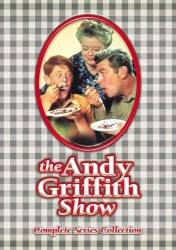
Continuity mistake: Barney tries showing Andy what the "part bloodhound" dog can do for The Manhunt so Barney blows a dog whistle, and in the closeups of the growling dog the rope that was tied to his collar is suddenly lying on the floor, but it's back on his collar in the following shot.
Revealing mistake: When Barney blows the dog whistle to call Blue from the back room, the dog comes running and knocks Barney on his back, and we can see a bit of the cushion that's under Barney's back - it's visible within the shadow under him.
Other mistake: When the escaped convict takes Barney hostage, they walk away from the lake and Barney drops the piece of paper with the convict's picture. Later, when Andy walks across the grass he finds Barney's cap and the paper lying on the grass, but the problem is that Andy needs to pull up at the center of the paper because it's pinned to ground, presumably so it wouldn't move or blow away for the shot.






Answer: As noted in the previous answers, in real life, things like this provided wind and/or rain deflection, and also maintained a bit of privacy when blinds were raised somewhat. The interior courthouse set was located in the studio, so the "outside" Main Street didn't exist. I believe these things were added to the courthouse windows for practicality, to avoid some crew movement being visible on the opposite side of those windows. These are not "window boxes" to hold anything, as they're actually bottomless; we can see the Venetian blind's long pull cords under them. They're made of plywood and simple to build, so the "material and labor" was inexpensive. Similar variations made of different materials are in other movies/shows. In 1957's "12 Angry Men," textured chicken wire glass panels are in the jury room windows, and in "Jesse Stone: Night Passage" another type is in Jesse's office windows.
Super Grover ★